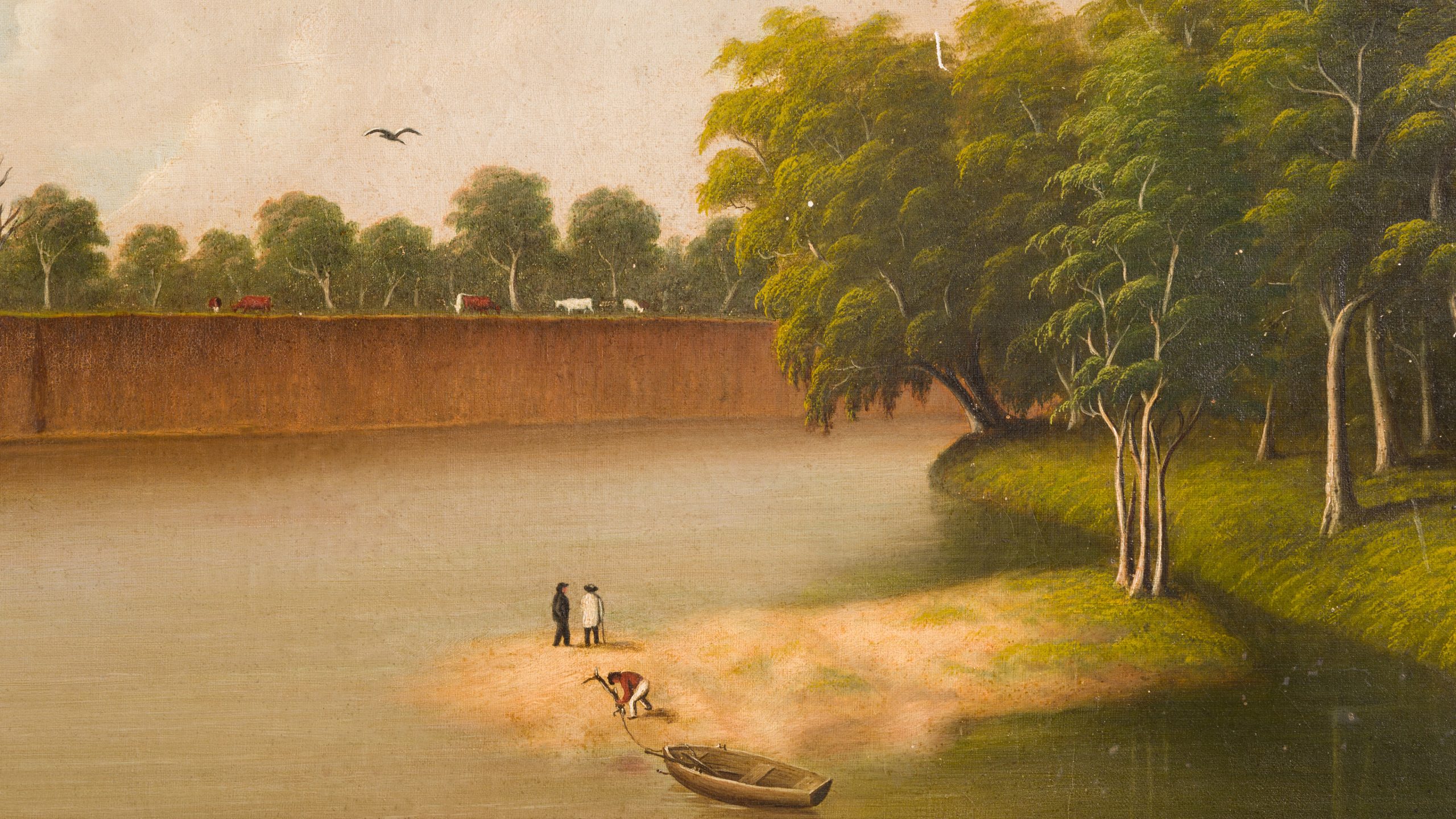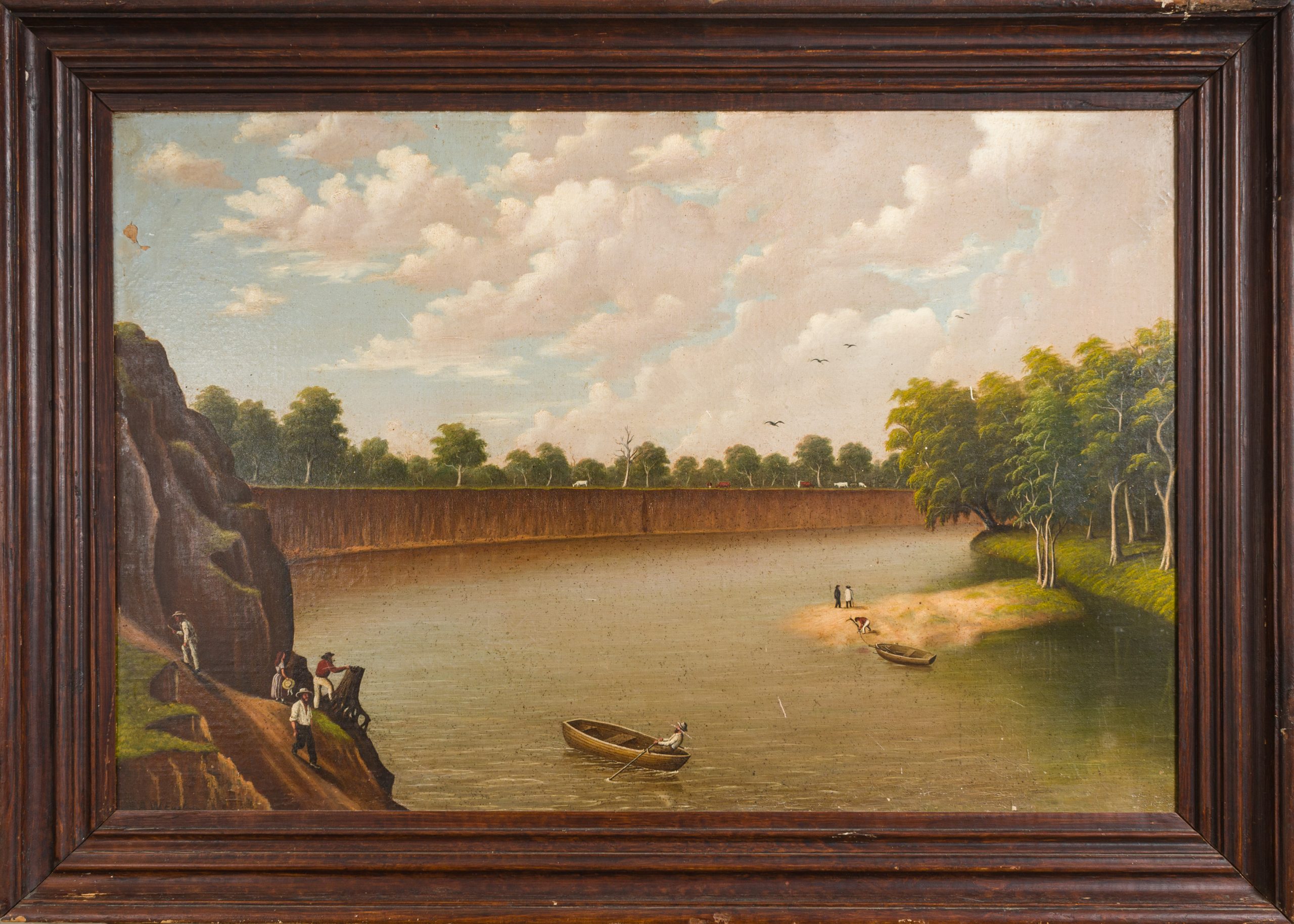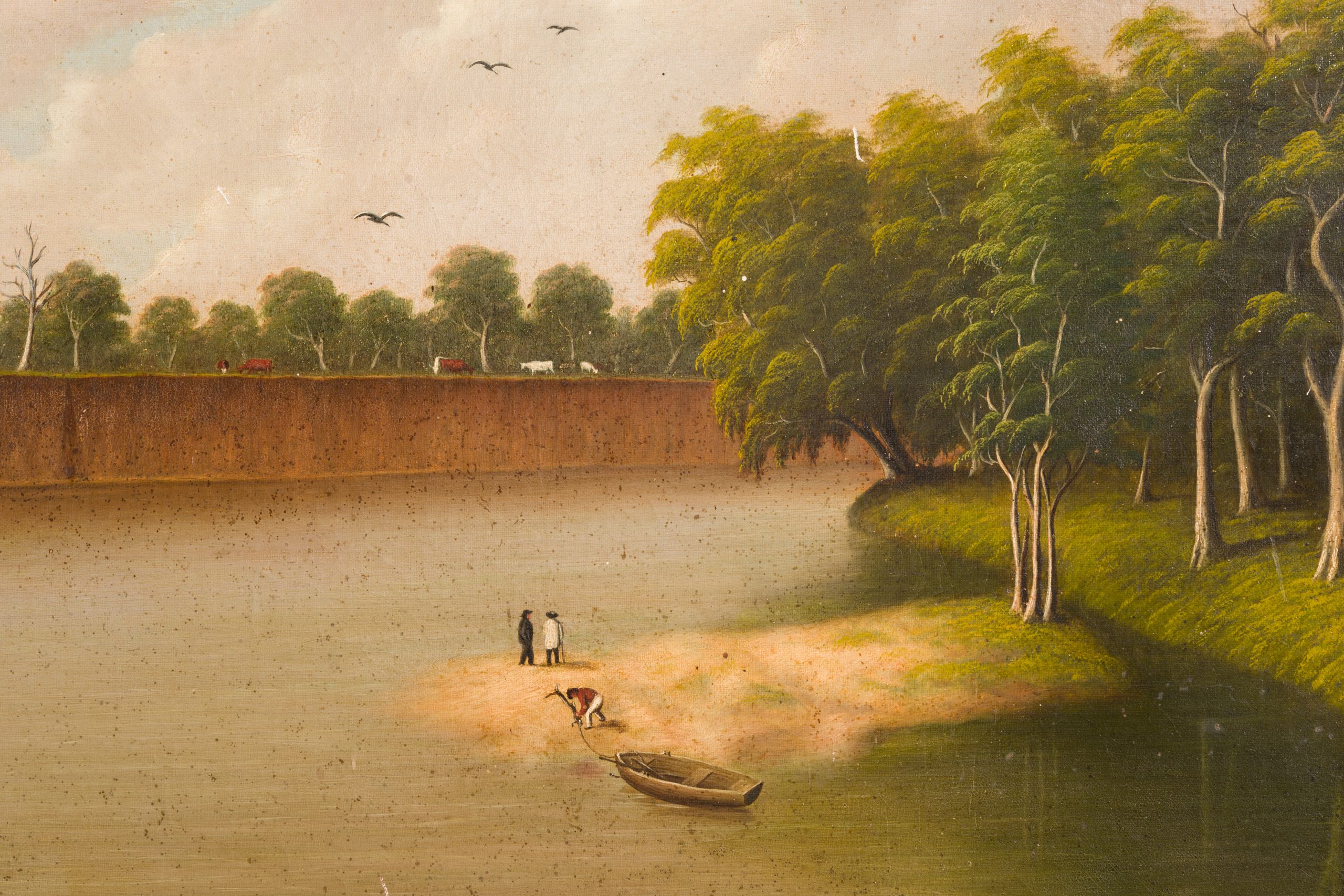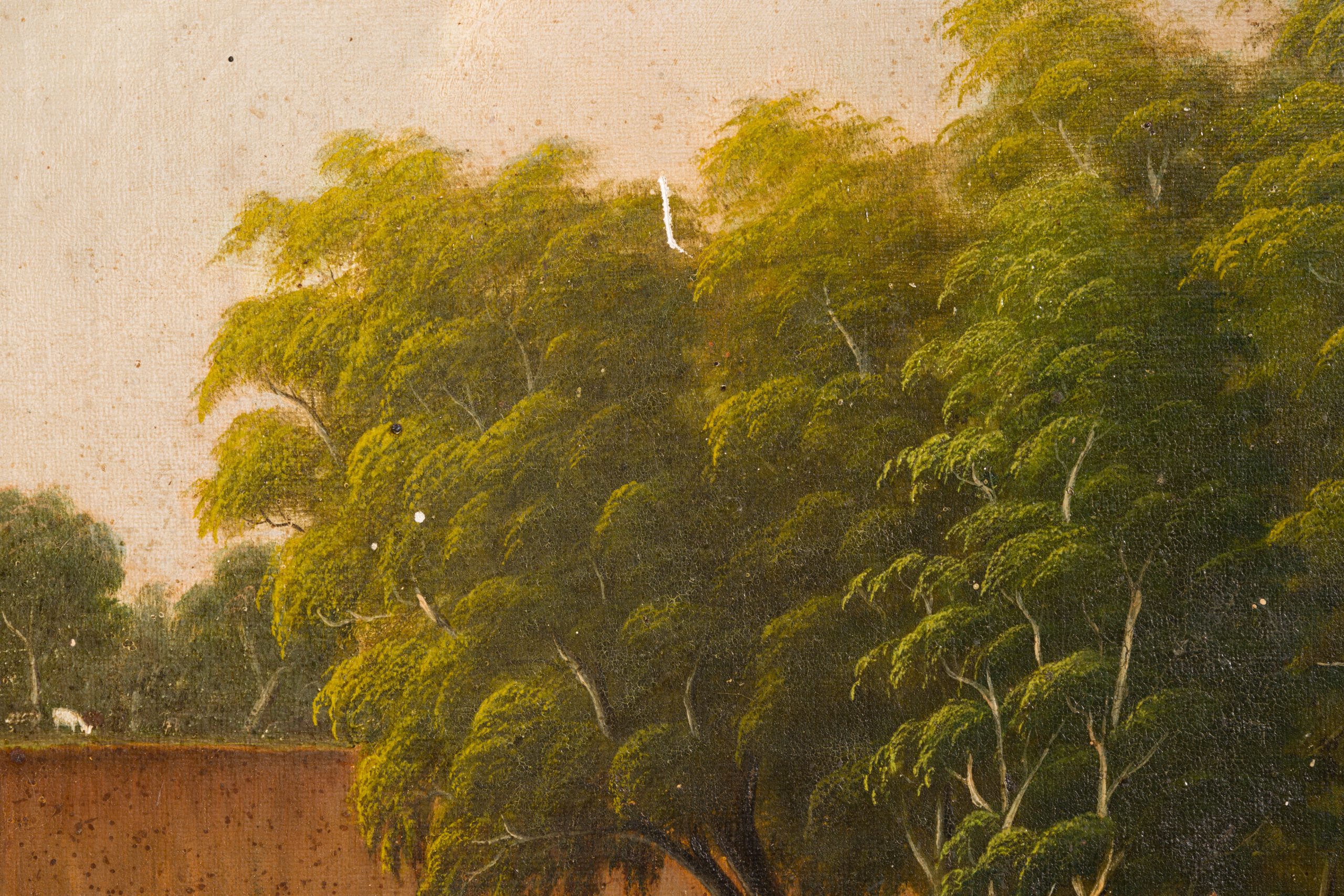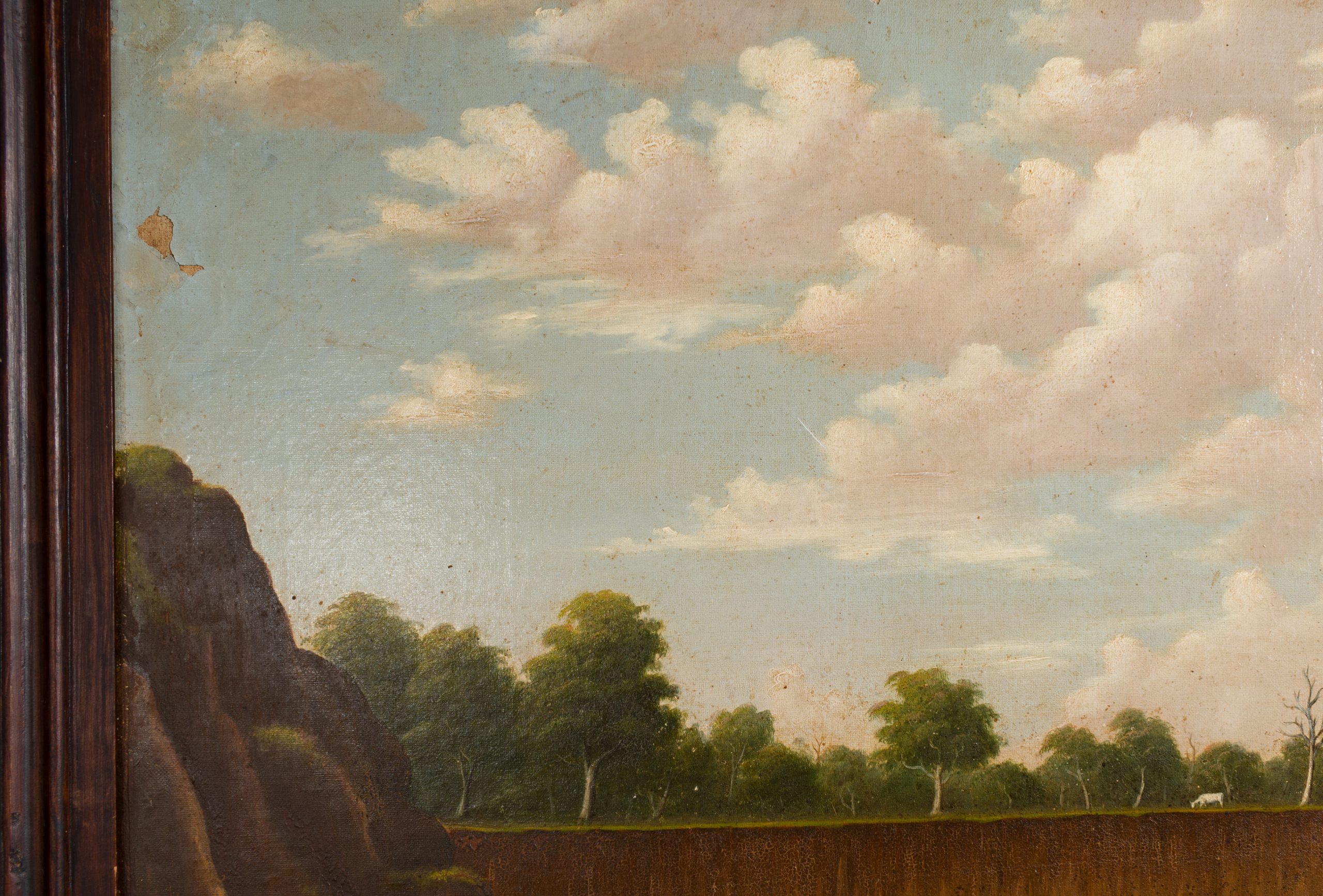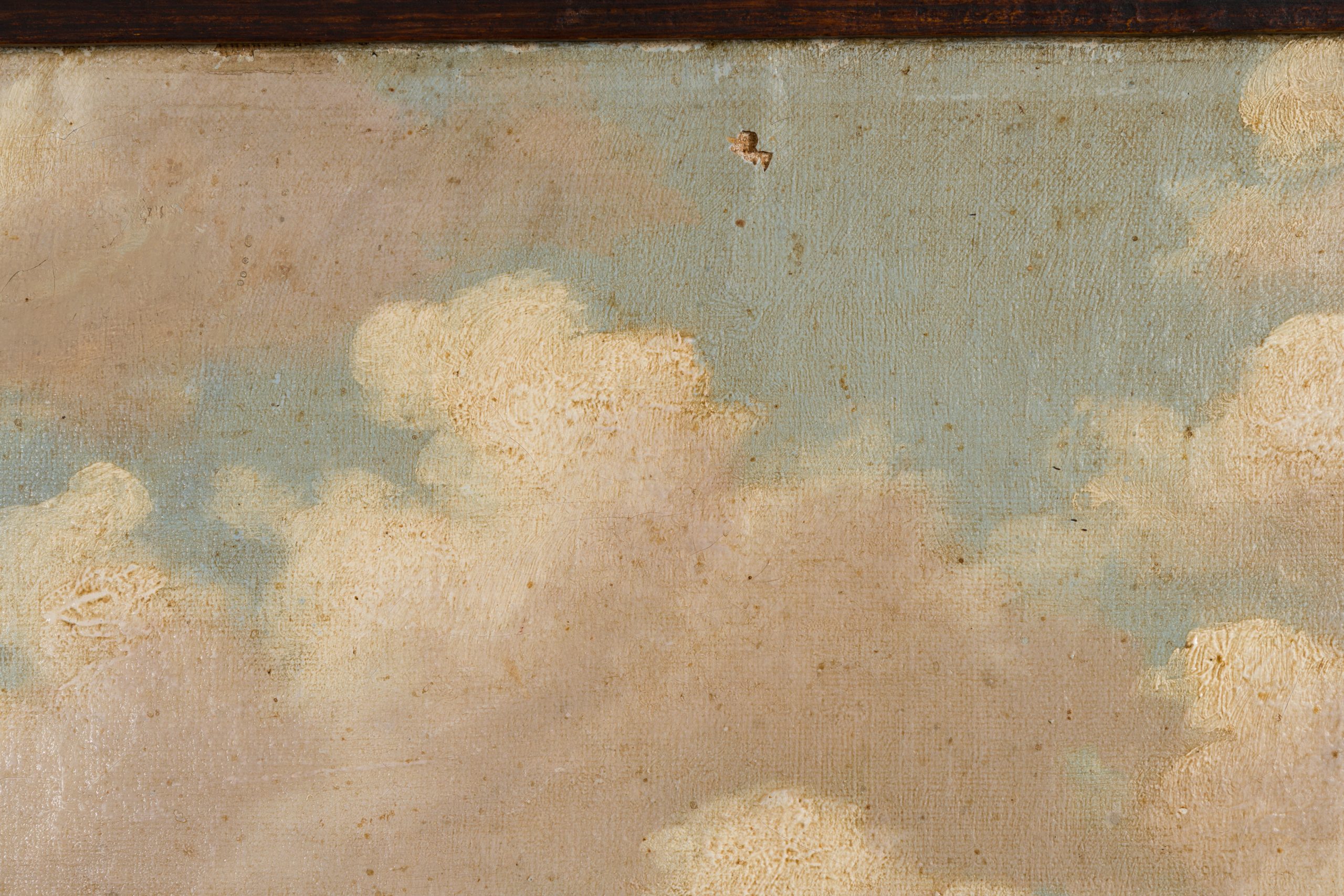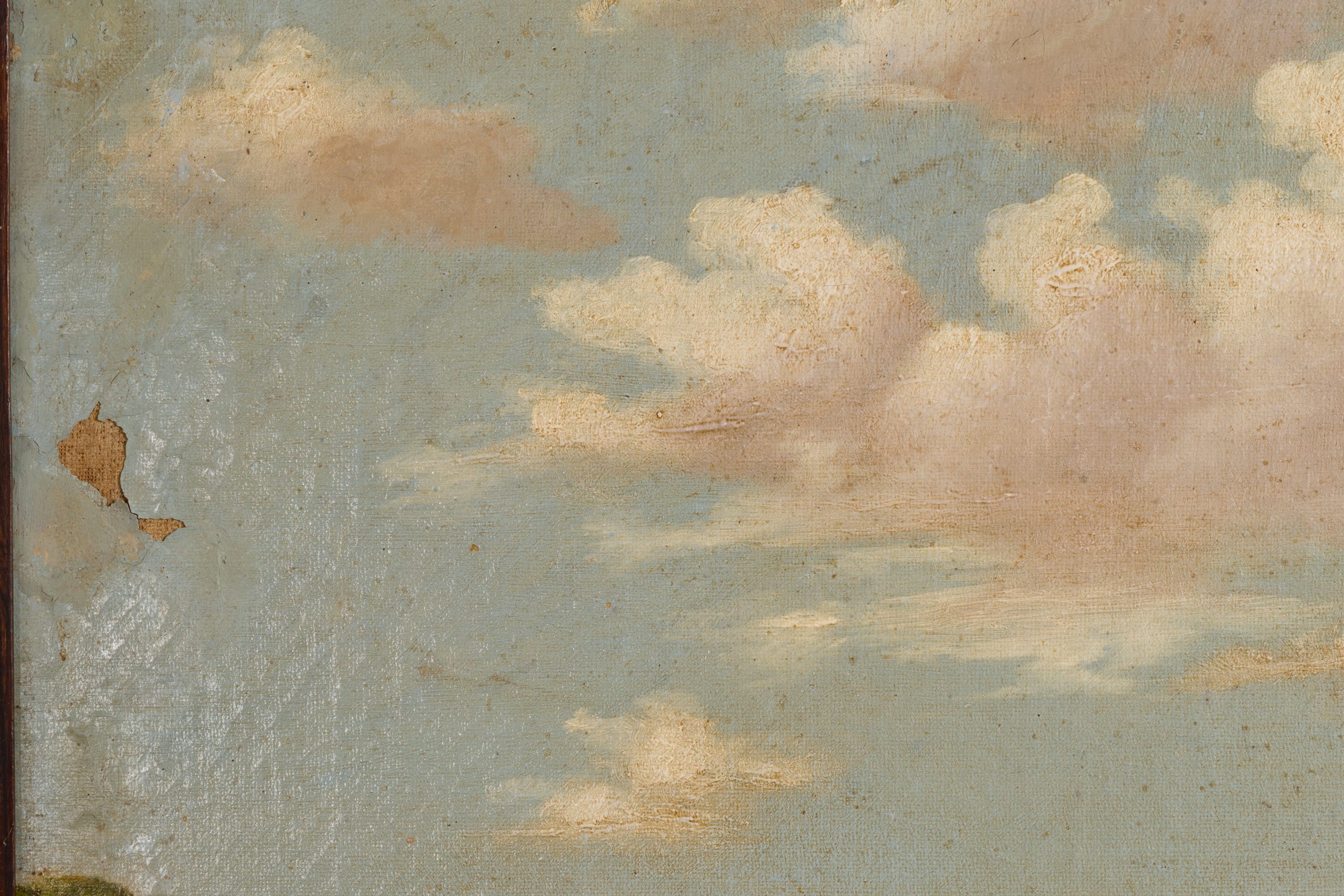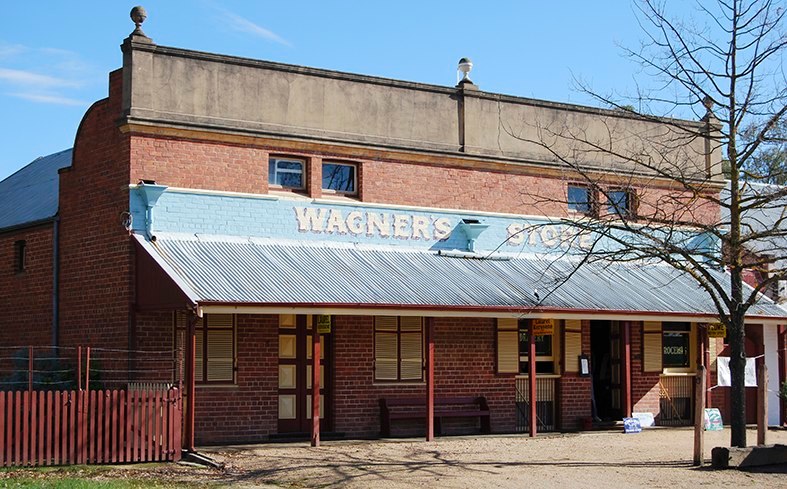An Ingenious and Elegant Artist
With a Poet’s Eye and Artist’s Hand
Alfred William Eustace (1820-1907) was born in England and came to Australia with his wife Sarah and children in 1851. Among his paintings he recorded the first paddle steamer to arrive at Albury in 1855, as well as a painting of the Woolshed gold rush, one of only two known paintings of this gold field.
Alfred was a Renaissance Man long before that term was popularised. Along with being a noted and possibly self-taught artist he was also a taxidermist, musician (playing the cornet, violin and guitar), poet, house-decorator, signwriter, spiritualist and shepherd.
Always travelling with oils or watercolours it was while working as shepherd that, lacking canvas or board, he decided to use leaves – what he called his ‘Bush Canvas’. These paintings on gum-leaves made his name as an artist, were described as ‘little gems of loveliness’ and received positive comments from Queen Victoria. However, Alfred was most insistent in clarifying that his Bush Canvas were not gum leaves but were from sapling red box trees.
River scenes such as this one of the River Murray dominate amongst Eustace’s paintings and provide us with a point of comparison as to how the various landscapes have changed since the mid-nineteenth century and the impact of white settlement. The human figures in this painting are subservient to the landscape, especially the river, and are primarily relegated to the perimeter of the painting providing some sense of Eustace’s priorities as an artist.
This painting hung in the home of a Jindera family for many years before coming to reside in the Jindera Pioneer Museum.


